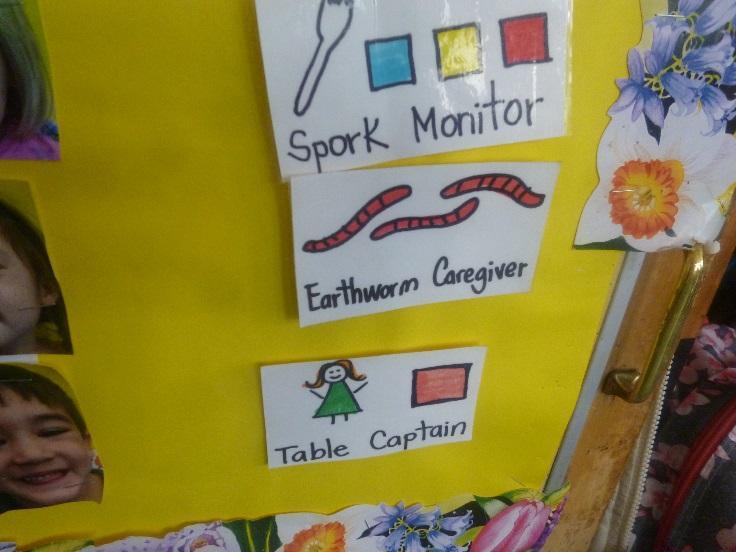Wiggly Worms Make Compost in Pre-K Classroom
By Fran Agnone, Greenpoint Eco-Schools Sustainability Coach @PS 110
A pre-K classroom is a wiggly place. It is difficult to keep eighteen four-year olds focused on the same topic and nearly impossible to keep them from adjusting their bodies and shifting positions when gathered on a rug. Enter the worm bin. Last month, I introduced a miniature habitat for red wigglers, or Eisenia fetida, into Nancy Pignatelli’s classroom. This bunch of wiggly worms can delight the earliest of learners while teaching them about decomposition and compost.

When gathered on the rug in a circle at the end of the school day I did not try to compete with their restless energy. Instead we entered into a worm dance.
A worm wiggles. Let’s all wiggle!
A worm doesn’t like the light. Let’s hide from the light!
A worm likes to be cozy in beds of wet newspaper. Let’s feel cozy!
After shaking like worms, we gathered back to our tables to squeeze water out of newspaper strips to create worm bedding. It has to be nice and fluffy and feel wet like a sponge. Once, sufficiently sponge-like, we added the newspaper to a small plastic box with holes for ventilation. A handful of worms were then placed under the newspaper layer along with an apple core and a banana peel.
Over time, the food and newspaper will be broken down by the worms into a rich, dark and crumbly compost called verimcompost. The worms will also multiply as they make themselves at home and start laying eggs. While we wait for the transformation of food into compost, Ms. Pignatelli has designated an Earthworm Caretaker to make sure the worms have enough scraps to eat and that their bedding stays wet.
In time, I’ll visit the students again to help harvest compost and donate the rich material to help the classroom plants get a boost of nutrients. If you think you’d like to start an experiment in your home with a mini-vermicompost system it’s as easy as wet newspaper, a recycled plastic bin with air holes, old apple peels and red wiggler worms you can get from the Lower East Side Ecology Center’s booth at the Union Square’s farmer market or a small handful from a friend’s bin. It’s a great experiment to explore before taking on a larger vermicompost system which is trickier to maintain.
As part of the Greenpoint Eco-School’s Project, the Pre-K teaching staff at PS110 has been inspired to bring more nature experiences into the school day. Along with worm bins, they are experimenting with nature journaling in the park and spending time with parent volunteers to explore the front garden. All this important work is helping keep our four year-olds from feeling restless and allowing them to learn to love the plants and animals around them—the roots of any strong environmentalist.




